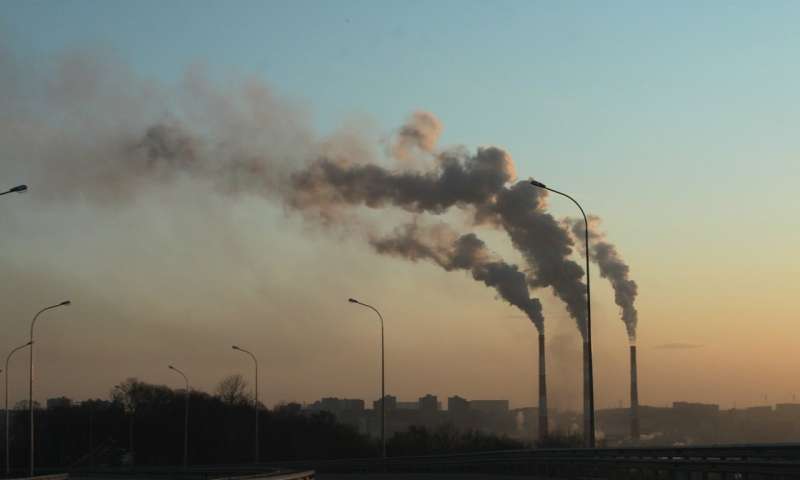What to do when cutting emissions alone is no longer enough

Global emissions reach about 40 billion tons each year. Such a massive number can be hard to conceptualize, but chemical engineer Jennifer Wilcox offers some context: Approximately 10 billion of these come from the transportation sector alone.
"To remove or avoid a quarter of our annual emissions, pretty much every airplane flight, every automobile, all of that would have to stop altogether," says Wilcox, a professor at Worcester Polytechnic Institute in Massachusetts, and a visiting scholar at Penn's Kleinman Center for Energy Policy. "No driving, no flying period."
Such a dramatic change isn't likely anytime soon. And generally speaking, Wilcox says no single solution will actually solve the climate crisis. "There's no silver bullet," she says.
The oceans and certain land features naturally absorb about half of the atmosphere's carbon. But beyond that organic help, there remains a huge amount to contend with, something Wilcox and other scientists have been addressing with a concept called negative emissions.
Broadly, this means pulling CO2 out of the air and permanently storing it, often underground, where it originated. Wilcox works on one type of negative emission called direct-air capture, which uses chemicals that react with carbon to facilitate this seize-and-store process.
At the Kleinman Center, she gave a talk on direct-air capture and more to students and scientists. Here are four takeaways from that talk and a conversation with Penn Today that followed.
1. A key step to meeting global climate change goals is to reduce emissions—but that on its own is no longer sufficient.
As part of the Paris Agreement, 175 countries signed on to help limit global temperature rise by no more than 2 degrees Celsius. Rates of carbon dioxide in the atmosphere, often described in terms of parts per million (ppm), are a key cause of this warming.
Those ppm keep increasing. In fact, the National Oceanic and Atmospheric Administration recently reported that in January 2020, air concentrations of CO2 had reached 413 ppm, up from 410 ppm just a year prior. Before the Industrial Revolution, that number hovered around 280 ppm. An important first step is to cut the current rate of CO2 emitting, Wilcox says. "But it's not going to be enough. We have not acted fast enough, so we also need negative emissions."
2. "Negative emissions" describes a range of solutions.
Beyond the direct-air capture that Wilcox studies, there's carbon capture at its most basic: Plant a tree, and that tree will naturally pull CO2 from the air. That, of course, requires many, many trees and still likely wouldn't do enough. In another process, minerals like calcium and magnesium found in rocks react with and store carbon dioxide. The time scale here is too long on its own, on the order of thousands of years, so scientists are looking to accelerate it.
"There's also bioenergy with carbon capture," Wilcox says. "This is pretty cool." With very high heat, organic materials that derive from plants and animals—feedstock, say—get turned into little pellets the size of coal particles. Retrofitted coal-fired plants can burn the biomass and capture the carbon. "You still have to do something with the CO2," she adds, "so it's really carbon capture and storage."
3. The oceans can only do so much.
Yes, the ocean waters suck up a lot of the carbon dioxide that humans put into the air each year. But, as Wilcox notes, it comes at a cost. "We're seeing coral bleaching, ocean acidification. It's scary." Not to mention the fact that because of how water circulation and tides works, the deep ocean doesn't yet "know" quite how bad it's gotten.
"The deep ocean isn't going to see these emissions levels for decades. In parts of the deep ocean, animals and plants still think we're at 270 ppm," Wilcox explains. Some in the research community are looking at carbon capture from the oceans. Higher CO2 concentrations could make it easier to extract carbon, but there's still much to learn and consider.
4. Scaling up to a point that will make a real difference is costly and requires buy-in from the federal government.
Right now, for example, direct-air capture costs around $600 per ton of CO2. In the next five years, that could drop to $300 a ton or so, but, given the need to remove billions of tons of carbon, that's still too high a price tag. The government has offered tax credits for either using CO2 in a specific way or storing it underground, but, according to Wilcox, the credits aren't high enough to offset the cost to companies, let alone provide them a profit.
More money thoughtfully invested and distributed among negative emissions projects could make the difference, Wilcox says. "I think about this in terms of a moonshot idea," she says, "certain projects globally in which the government has been willing to spend a significant portion of GDP. One of those was in 1966, the Apollo program—the U.S. invested one half of 1% of GDP. There was a race to get to the moon. Now this is a climate crisis, but that was just exciting: The first to get to the moon and safely back to Earth. Today, that would equate to about $100 billion."
A different kind of race is on now, she says. "Because, actually, we've never scaled up like this before."
Provided by University of Pennsylvania



















